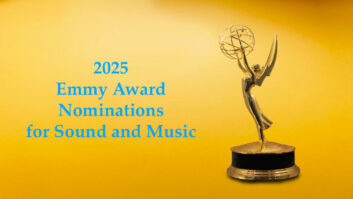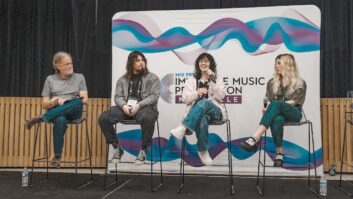During a break in rehearsals in the midst of Grammy week, Joel Singer, co-owner and chief tech of Music Mix Mobile, said to me, “We don’t really do music anymore. We do music for television.” We were backstage at the Staples Center, in the music compound, surrounded by about as much audio production technology per square foot as you can find. He wasn’t lamenting the loss of high-end live music recording, just being realistic about budgets and technology. And while he backtracked and admitted to a few music-only dates, his trucks left L.A. for a PBS music TV program from the White House, then rolled on to Miami for an MTV event at the Super Bowl.
A couple of weeks later, I found myself in Orlando at the home-based studio of Eric Schilling. He and John Harris mix the music sections at the Grammys, but when Eric wanted to build out his studio a few years back, he mimicked the Grammy truck setup, down to the Digidesign console and Genelec monitoring. I told him what Joel had said, and he immediately agreed, then pulled up the uncompressed HD surround clip of Pink’s performance, followed by Dave Matthews, two of his favorites from that night. Wow. He then showed a short clip from a major artist whose Buenos Aires shows he was mixing for Blu-Ray/DVD release this spring. It was absolutely stunning, with a beautiful image, both onscreen and in full-range, sweetly enveloping 5.1. I thought to myself, “Maybe this music for television isn’t such a bad thing.”
Sports and entertainment programming drive advancements in television technology. It’s long been that way, from production through delivery and playback. Whenever we in music and recording fret over new format rollouts or illegal downloads, we should step back and look at the history of network television. A free medium (to the consumer) for most of its life, it then had to contend with cable and satellite and video on demand. Digital conversion. IPTV. Soon your television will simply be a monitor for whatever comes over your ISP. But each upgrade, each demand on the consumer to shell out for a new playback system, brought with it a corresponding leap forward in quality.
Expand the notion of television to include sound-for-picture, and it really opens up. With each new generation, gamers have benefited from tremendous development in motion capture, visual effects and, yes, 5.1 playback. To promote Inglourious Basterds on Blu-Ray this past holiday season, the studio touted the vast improvement in visuals and sound. Concerts are being “broadcast” to movie theaters for that immersive, huge experience with a live feel. Yes, people watch movies on smartphones, but still, everywhere you see picture, whether in a home theater or a sports bar, you notice a marked improvement in quality. And you hear it, too.
There are download sites where you can get 24-bit surround music files for a slightly higher price, and there are organizations such as the METAlliance and the Recording Academy that are fighting the good fight for a better consumer experience. But in the meantime, go back to your HD 5.1 DVR recording of Dave Matthews at the Grammys, then plug in your iPod to the same system and ask yourself if being tied to picture is such a bad way to experience music.







